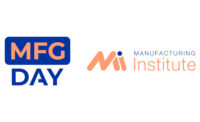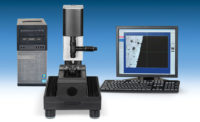NEW YORK, NY– Global cross-border transactions made up a majority of global industrial manufacturing merger and acquisition (M&A) activity in the third quarter of 2011 as companies looked to new, more stable markets to grow their businesses and offset concerns of an uncertain global economic environment, according to Assembling value, a quarterly analysis of M&A activity in the global industrial manufacturing industry by PwC US.
Global cross-border transactions led M&A activity in the third quarter of 2011 with 16 cross-border deals that were worth more than $50 million, representing 55% of total deal volume. Eleven transactions, or 69% of all cross-border deals worth more than $50 million in the third quarter, included targets in Europe, as U.S. and Asian acquirers focused their cross-border interests on that region. In addition, the vast majority of North American outbound deals were to Europe, which indicates that North American firms, and particularly those in the United States, are finding opportunities in Europe.
In the third quarter of 2011, there were 29 deals worth more than $50 million with a total value of $9.4 billion, compared to the 31 deals and a total value of $16.4 billion in the same period of 2010. Comparatively, there were 147 small deals (worth $50 million or less) in the third quarter of 2011, continuing a trend toward smaller, niche deals and away from larger more transformative acquisitions, according to PwC.
“The decrease in overall M&A volume and value in industrial manufacturing in the third quarter was driven by uncertainty over the global economy, concerns of a double-dip recession in the U.S. and the sovereign debt crisis in Europe. At the same time, these concerns are the same factors behind a renewed focus on targets in mature, more stable regions such as the U.S. and Europe, implying that dealmakers are more cautious in their acquisition efforts,” says Barry Misthal, global industrial manufacturing leader for PwC. “Looking ahead, while we still see significant overhang on these issues moving into the fourth quarter, companies continue to accumulate cash reserves and remain very interested in seeking inorganic growth opportunities in new product and geographic segments.”
U.S. targets and acquirers led M&A activity during the third quarter of 2011 with 17 U.S.-affiliated deals worth more than $50 million, totaling $5.9 billion, and comprising more than half of total deal volume and value. Interest in U.S. targets was high, contributing a third of the total deals for the third quarter.
“Optimism around a manufacturing renaissance in the U.S. and the continuing trend of consolidation in mature markets are among the factors driving the robust activity in the U.S.,” said Misthal. “In a recent survey of executives at large, multinational U.S. industrial manufacturing companies, PwC found that 62% of respondents expect to participate in new business initiatives, with 35% planning merger and acquisition activity over the next 12 months. Of that number, all are looking at purchasing another business, demonstrating that U.S. industrial manufacturers are looking to M&A to drive revenues and offset any weaknesses in organic growth.”
Strategic investors continued to dominate deal activity in the third quarter of 2011, contributing 72% of deals worth more than $50 million, including the one $1.2 billion mega deal-or transaction worth $1 billion or more-that was announced in the third quarter. According to PwC, the ongoing domination of strategic investors in the market is a result of stronger financial positions of industrial manufacturing companies and the reluctance of financial investors to participate in deal activity because of the ongoing uncertainty about the economic recovery.
The industrial machinery sector led activity in the third quarter of 2011, contributing 52% of deals, followed by fabricated metal products and electronic and electrical equipment with 17% and 21%, respectively. “We expect that the industrial machinery sector will continue to contribute the greatest amount of deals, but newer subsectors such as the electronic and electrical equipment and plastic products are likely to gain transaction momentum, as innovation drives growth in these subsectors,” added Misthal.
Transactions with targets in North America, and the UK and Eurozone regions contributed the majority of deal activity in the third quarter of 2011, representing 45% and 31% of volume, respectively. Deal activity with targets in Asia and Oceania continued to decline, representing 17% of total deal volume for deals valued at $50 million or more, compared to 28% of total deal volume for the full year 2010. PwC attributes the decline in interest for the Asia and Oceania region in part due to the fact that companies in these markets are fairly new and small and more likely to pursue organic growth in their local markets, which are less saturated and offer greater growth opportunities.
M&A activity in Japan increased during the third quarter of 2011, especially in cross-border and financial investor transactions, generating the third-largest deal during the quarter. According to PwC, Asian markets are expected to increase their contributions to deal activity as firms within those markets continue to grow and become more able to diversify their operations globally.
Deal activity in the BRIC countries also decreased in volume and value during the third quarter of 2011, with two transactions involving China compared with eight in the prior quarter, and only one deal in India. “Deal activity seems to have been most affected by concerns over decelerating growth in emerging markets, and less so by issues in the U.S. and Eurozone. For the short run, investors may not be willing to pull the trigger on additional BRIC deals until some of the concerns around the slowdown in these markets play out,” said Misthal.
For a copy ofAssembling value,PwC’s quarterly analysis of M&A activity in the global industrial manufacturing sector, please visit:www.pwc.com/us/industrialproducts
Get our new eMagazine delivered to your inbox every month.
Stay in the know with Quality’s comprehensive coverage of the manufacturing and metrology industries.
SIGN UP TODAY!Copyright ©2024. All Rights Reserved BNP Media.
Design, CMS, Hosting & Web Development :: ePublishing


